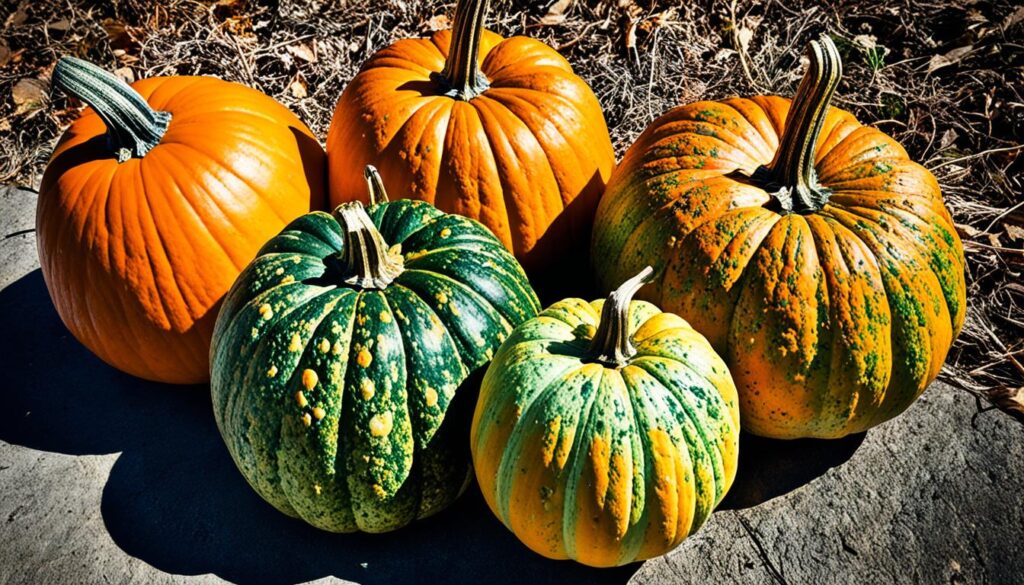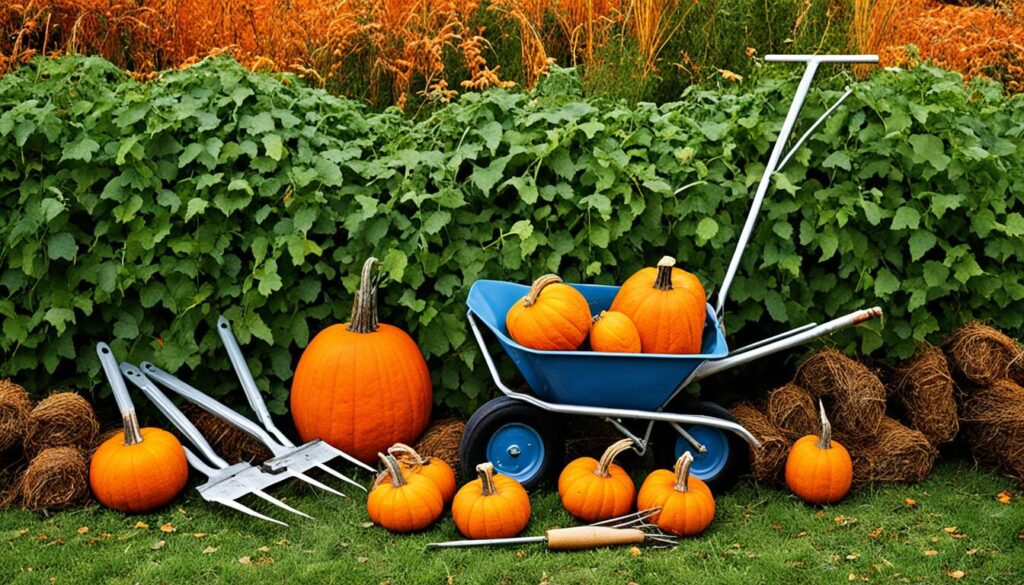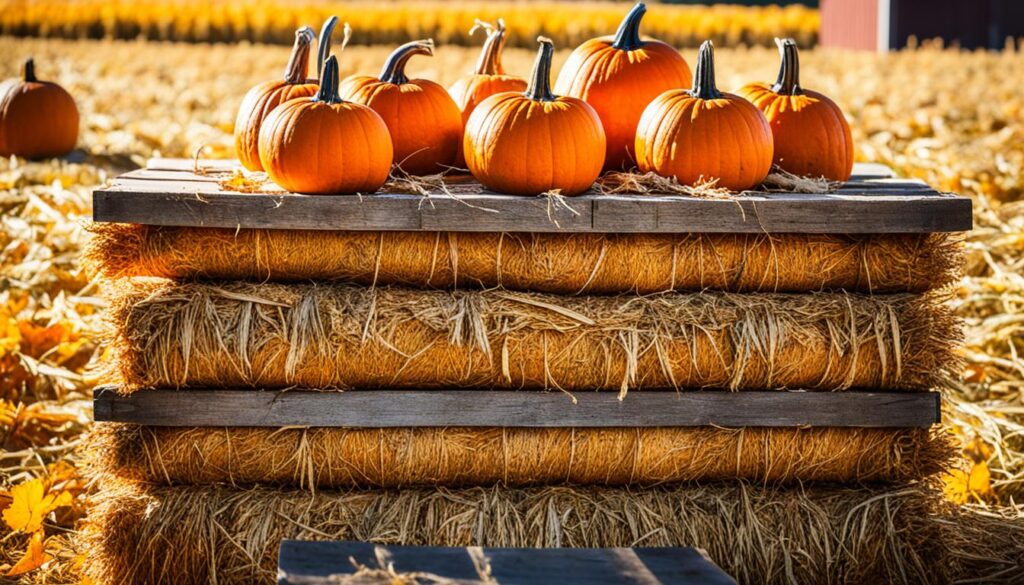As the crisp autumn air sets in and the leaves begin to change, one of the most anticipated seasonal activities is picking pumpkins. But have you ever wondered what the telltale signs are that signal a pumpkin’s readiness for harvesting? Whether you’re scouring pumpkin patches, tending to your own backyard garden, or planning a fall activities excursion, mastering the art of autumn harvest is essential for creating the ultimate gourds gathering experience. Join us as we explore the secrets to identifying the perfect pumpkins and farm visits that will elevate your seasonal produce adventures to new heights.
How can you tell when your pumpkins are ready for the jack-o-lantern carving and autumnal decorations ahead? The key lies in recognizing the subtle visual and tactile cues that signify peak ripeness. Pumpkins destined for pumpkin pie baking and other culinary delights require a different set of readiness indicators. Dive in to discover the essential tips that will have you harvesting pumpkins like a seasoned pro, ensuring your fall festivities are truly the stuff of seasonal dreams.
Recognizing When Pumpkins Are Ready for Harvesting
Knowing when to pick your pumpkins is key for a great fall harvest. Look for certain signs and understand the growth timeline. This way, you’ll get your pumpkins at their best.
Signs of Ripeness
One clear sign of a ripe pumpkin is its color. They turn orange as they grow and get ready. But, don’t pick pumpkins that are too shiny. A dull, matte finish on the rind means they’re ready.
The stem also tells you when to pick. When pumpkins are mature, the stem and vine turn yellow and dry. A tough, leathery stem means it’s time to harvest.
Also, check the size of your pumpkins. Most take 90 to 120 days to grow, and giants need up to 150 days. Don’t pick any that look too small.
Watch the weather and try to pick your pumpkins before the first frost. Pumpkins can survive a light frost, but not a long freeze.
| Maturity Indicator | Description |
|---|---|
| Color | Pumpkins develop their characteristic orange hue over several weeks as the growing season ends. Shiny, bright pumpkins are typically not fully ripe. |
| Rind Hardness | A mature pumpkin will have a dull, matte-like rind, rather than a shiny, glossy appearance. |
| Stem Condition | As pumpkins reach maturity, the vine and stem will begin to yellow and dry out, and the stem will become thick and leathery. |
| Size | Most pumpkins take 90 to 120 days to fully mature, with giant pumpkins needing up to 150 days. Avoid harvesting any pumpkins that still appear small and immature. |
| Frost Warnings | Pumpkins can handle light frosts, but prolonged exposure to freezing temperatures can damage the fruit. Try to harvest your pumpkins before the first frost arrives. |
Keep an eye on these signs to pick your pumpkins at the best time. This way, they’ll be perfect for decorating and cooking this fall.

Proper Harvesting Techniques for Pumpkins
When it’s time to harvest your pumpkins and gourds, use the right techniques for their longevity. Start by using sharp pruners or a knife to cut the fruit from the vine. Make sure to leave a 3- to 4-inch stem on pumpkins and a 1-inch stem on gourds. This stem helps protect against bacteria and fungi, keeping your harvest fresh longer.
Don’t lift pumpkins by the stem, as it can break off and leave a wound. Instead, support them from the sides or bottom when moving. After you’ve picked them, clean your pumpkins with a damp cloth to remove dirt and debris. This step is crucial to prevent diseases that can shorten their storage life.
| Pumpkin Harvesting Tips | Explanation |
|---|---|
| Leave 3-4 inch stem on pumpkins | The stem acts as a barrier against bacteria and fungi, helping to increase shelf life |
| Leave 1 inch stem on gourds | Shorter stem length is appropriate for smaller gourds |
| Support pumpkins from the sides or bottom | Avoid lifting by the stem to prevent it from breaking off |
| Wipe pumpkins clean after harvesting | Removing dirt and debris helps prevent contamination and disease |
By following these proper pumpkin harvesting techniques, your pumpkins and gourds will stay fresh for weeks. A bit of care during handling and stem attachment, along with quick cleaning, prepares your pumpkin harvest for optimal storage and enjoyment.

The Importance of Curing Harvested Pumpkins
Curing Process
Curing is a key step in pumpkin harvesting. It makes the skin tough, which keeps pumpkins fresh longer and improves their taste. Place the pumpkins in a warm, dry spot with temperatures between 80-85°F for about ten days.
This method makes pumpkins more durable and flavorful. It’s great if you’re planning to cook or bake with them.
Curing is important for several reasons. It makes the pumpkin skin hard, which protects the inside from damage and decay. This means you can enjoy your pumpkins for a longer time after picking. Also, curing makes the pumpkins sweeter, which is perfect for your favorite fall dishes.
- Cure pumpkins at a temperature of 80-85°F for about 10 days.
- This process helps the skin harden, extending the pumpkin’s shelf life.
- Curing also enhances the pumpkin’s natural sweetness, improving the flavor.
Properly curing your pumpkins gives you a reward of longer-lasting, tastier produce. This step is crucial for enhancing your fall cooking and baking. Don’t miss out on this important part of growing pumpkins!

Optimal Pumpkin Storage for Longevity
After harvesting and curing your pumpkins, it’s key to store them right to keep them fresh. Keep them in a spot that’s cool and dry, with temperatures between 50-55°F and humidity at 50-75%. Make sure the area lets in air well to stop moisture from building up. This can cause mold and rot.
Don’t put your pumpkins in extreme heat or cold. A regular fridge (35-45°F) can hurt them and make them last shorter. High temperatures can make them lose weight, fade in color, and not taste as good. Keep them away from direct sunlight too, as it can make them ripen and decay faster.
With the right storage, your pumpkins can stay fresh for up to 5 months. By following these tips, you can enjoy your pumpkins well into winter. They’ll add the perfect touch to your dishes and decorations.



